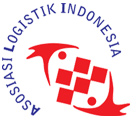How to Boost Supply Chain Efficiency with a Plan for Every Part Program
Paul Hoover
 It's
no secret that companies are improving supply chain efficiency through Lean
manufacturing, and by streamlining material flows and reducing inventory.
However, many still overlook a key area: Lean material handling systems that
tightly link purchased parts to production operations. A Plan for Every Part
(PFEP) Program is one way to shorten supply chain cycle times, get the right
parts to the right place at the right time and reduce inventory. But how do you
ensure your PFEP does more than just collect data on the shop floor?
It's
no secret that companies are improving supply chain efficiency through Lean
manufacturing, and by streamlining material flows and reducing inventory.
However, many still overlook a key area: Lean material handling systems that
tightly link purchased parts to production operations. A Plan for Every Part
(PFEP) Program is one way to shorten supply chain cycle times, get the right
parts to the right place at the right time and reduce inventory. But how do you
ensure your PFEP does more than just collect data on the shop floor?
What is a Plan for Every Part Program and Why Do I Need One?
A Plan for Every Part Program efficiently manages the movement and replenishment of parts from suppliers to the point of need. It defines and maintains information about every part used in your manufacturing process: where it comes from, how it's purchased and received, its weight and dimensions, and how it's packaged, stored and delivered. Many companies already have this information, but it's in silos throughout the organization. A PFEP brings disparate parts data together in one centralized database in the form of a spreadsheet, Web-based database or Access database.
Your parts database may include different types of information about each part:
• Part identification information: part numbers, descriptions and unique features
• Storage data: part height, weight, size, packaging, containers and location
• Usage information: how parts are used on a daily basis, how many it takes to produce a finished product, how many are used per hour, inventory levels at each machine/workstation
• Ordering data: how often a part is ordered, in what quantity, and any problems typically associated with ordering it
• Supplier data: name, city, country
• Delivery information: transportation mode, carrier, transit time, frequency
With centralized access to comprehensive parts information, you have better visibility into vendor capabilities, can reduce inventory and material shortages and eliminate supply chain costs and complexities. You'll know where the parts you need are and won't have to worry about schedules slipping. To make your PFEP program work, it's important to get three stakeholders on board early.
Getting These 3 Key Stakeholders On Board Early Can Be the Difference Between Success and Failure…
1. Corporate and Plant Logistics
Great news! Corporate Logistics has decided to move to a PFEP network. Bad news: the individual plants don't know about the program or they know but aren't on board. The best way to keep this challenge from derailing your PFEP program is to set up an implementation meeting that includes your corporate and plant logistics departments before you begin your PFEP journey. Getting both groups on the same page in terms of expectations and goals is critical to your success.
To facilitate that success, designate a project champion from each group right from the start and set clear expectations.
2, Corporate Purchasing
The next key group of stakeholders is Corporate Purchasing (supplier sourcing). It's tough for a PFEP program to be successful if these groups aren't engaged early or don't understand your program vision or requirements.
Setting new expectations, holding suppliers accountable and helping the operations team implement the program may require changes to existing purchasing contracts and/or service level agreements. That's why it's critical to involve the purchasing and supplier sourcing teams right out of the gate. This particular stakeholder's engagement can be a determining factor in whether your PFEP Program is a success or failure.
3. Suppliers
Communication with suppliers is another critical factor that can lead to PFEP program success or failure. Establishing good communication can be as simple as clearly defining what you need/expect from suppliers upfront.
PFEP programs often set new expectations and deliverable requirements for suppliers. This could mean providing parts and packaging weights/dimensions or meeting new packaging and shipping specifications (e.g. packaging type, standard size, standard weight per container, standard pack quantity, planned shipment day and time). Suppliers may be held accountable for shipping to these standards or notifying 3PLs or plant materials analysts if parts or packaging information changes. If suppliers don't know about the new expectations, they'll be hard-pressed to meet them.
Get the PFEP Ball Rolling While you Build Your Business Case
Say you've started putting a PFEP program in place. You've communicated your new requirements to suppliers. As you work on developing a business case and securing buy-in from your three key stakeholder groups, you can get a head start on collecting the data you need to populate your database and get your program off the ground. Here's what you can do to start collecting data:
• Walk the manufacturing plant floor to collect data
• Have an updated Bill of Materials (BOM) to make sure you account for all parts
• Engage a forklift operator to help you find parts and pull containers from rack
• Measure and weigh parts
Want to start a Plan For Every Part Program? Already have one in place? How did you execute on your PFEP strategy? Are all key functional teams involved and aligned? Share your thoughts by commenting on this post.
http://blog.ryder.com/2014/06/boost-supply-chain-efficiency-plan-every-part-program/








